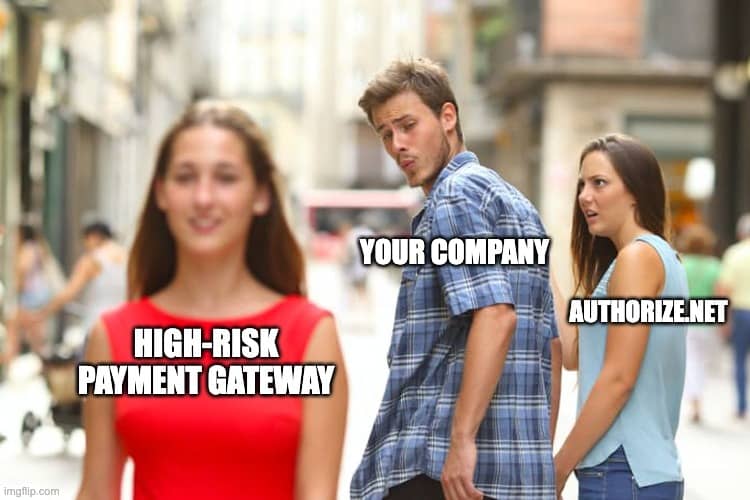What's an ISA Fee?

If you travel abroad, the odds are good that you’ve seen it: an added fee on your credit card statement that gets added to your purchase. These added fees - an ISA Fee (International Service Assessment) - can get expensive if you make a series of transactions abroad. Thankfully, there are several ways to reduce the amount you pay with your International Service Assessment.
What Is the Visa International Service Assessment (ISA)?
An International Service Assessment is a fee charged by Visa on foreign transactions. This fee is typically around 0.8 percent, but that is another fee that Visa may charge you. Unfortunately, these fees can increase based on other factors, including the country of origin, the other merchant fees they use, if a merchant passes along fees to the customer and more.
When Is the Visa International Service Assessment Charged?
The customer is charged at the time of the transaction. The payment is due with the rest of your credit card payment - there is usually no delay. Furthermore, the 0.8 percent fee is assessed with every transaction. In other words, if you make ten transactions, you will be charged 0.8 percent of each transaction.
Remember that International Service Assessment fees are not exclusive to Visa cards. Other credit card companies also tend to charge fees for making foreign purchases, and while these fees can vary in their overall percentage, you will almost certainly have to pay them if you use a credit card abroad.
Having an International Service Assessment is more likely in some product categories, such as high-risk payments, which often have financial transactions that run through different counties. This is why it is very important that you fully understand how your transactions work and what fees you will incur.
Who Pays the Visa International Service Assessment Fee?
You do.
The Visa International Service Assessment fee has been around since 2008. It appears as an added cost on your credit card statement. You will make the payment for your ISA Fee as part of your credit payment or ACH payment processing.
Unfortunately, you need to remember that many of these payments occur even if you aren’t abroad! It may seem confusing, but the “international” part of the International Service Fee doesn’t refer to your location or even where the purchase is made from. Instead, these changes occur when they are related to a bank located abroad. This means that you may pay the fee even if you are in the United States.
How Can You Keep Foreign Transaction Fees Low?
Thankfully, there are many ways that you can keep your foreign transaction fees low or eliminate them.
First and foremost, plan appropriately and examine if you have other credit card options that may be less expensive. Some cards offer lower fees, and it may be worth contacting a variety of credit card merchants to inquire about the least expensive way to ensure that you are avoiding paying these extra fees.
Second, consider alternative arrangements. For example, making payments in cash may help you avoid these extra fees. Of course, paying in cash does have other drawbacks:
- You’ll likely have to pay fees for any conversions.
- You will have to carry around the cash.
- You may have to convert the money back into your home currency before returning home.
Third, make sure to watch out for additional conversion fees. Some merchants will charge additional fees. It will take some legwork, but you should connect with your credit card company before making any foreign travel and ensure they do not charge additional fees.
Fourth, if there are issues, you may want to examine what credit cards do not enact an International Service Assessment. These cards exist; if you travel enough, they may be well worth examining. That’s not to say that they will solve all of your problems, as they may come with flat fees, higher interest rates or a lack of benefits that you’re accustomed to with your already existing credit card arrangements. As such, you will have to do the legwork to determine if this arrangement benefits you or your business.
Fifth, talk with your bank or credit card company. They may have alternative arrangements that can save you money or may at least be able to provide you with useful advice that can ensure you’re minimizing your fees. At a minimum, you should check out your online account options and let your credit card company know that you are traveling abroad. This is because many credit card companies will freeze your credit card if they detect foreign purchases, suspecting that your card has been stolen and is being used fraudulently. Not only can this be exceptionally problematic if you are traveling abroad, but it can be expensive, as you may need to seek alternative payment arrangements or pay a fee to unlock your credit card.
Finally, if you are not traveling abroad but get hit with these fees regularly, make sure to examine where you are making purchases if you’re making purchases at establishments or websites located abroad. This would explain why you are incurring these fees, and examining your repurchasing options may be able to reduce your rate.

What is an ISA Fee? (also: Do I really need this scarf right now?)
Frequently Asked Questions
The confusing nature of the International Service Assessment has left many merchants confused about what it does and how it can be reduced. Fortunately for you and your business, the International Service Assessment has been around for some time, and if you have questions about it, it has probably been asked and answered in the past.
An everyday fee that often comes as a surprise is what Visa calls an international assessment fee or ISA fee. These fees are also known as international or international transaction fees, and the name and rate attached to these fees change according to the card issuer. So, ranging from under half a percent to over a percent, these fees can add up when stacked with other interchange and processing fees.
What is an ISA fee?
- An International service assessment (ISA) fee is a processing fee charged by Visa to merchants whenever a customer uses a credit or debit card issued by a bank outside the United States.
- While interchange rates are always charged on international transactions and range between 1 and 2%, international service fees are additional fees on top of the interchange rates.
When are international service fees charged?
- International service fees involve the relationship between the acquiring bank and the issuing bank.
- If a transaction occurs in the U.S., and the customer uses a card issued by a bank registered or based out of a different country - even if the bank has a branch or what have you in the states, the merchant will be charged an international service fee.
Visa charges two fees per foreign transaction:
- International Service Assessment Fee (ISA fee) - 0.80% - 1.20%
- Visa charges this fee depending on what currency the transaction is settled in.
- If the customer chooses to settle in U.S. dollars, there’s no currency exchange fee, but if they choose to transact in a foreign currency, Visa tacks on another 0.40%.
Difference between the ISA fee and the IAF fee
- Visa does charge both separate fees.
Mastercard
- Charges two fees per foreign transaction
- International Cross Border Fee - 0.40%
- This applies to any time a bank uses a card outside the U.S.
- Acquirer Program Support Fee – 0.55% Mastercard’s cross-border fee is stacked alongside a fee known as the acquirer program support fee (APSF).
Discover
- International fees are 0.55% and 0.80%
American Express
- They charge at least 0.40% for international transactions.
Payment Pricing Setup
- Three main payment pricing setups are interchange plus, tiered, and flat.
- Interchange plus: the fees are added to the specific transaction at the cost
- Tiered: the additional costs of international transactions may allow processors to charge you a higher transaction rate, allowing them to profit from your international transaction
- Flat: many processors just bundle this into your plan
Reducing the cost of the ISA fee
- Besides switching to interchange-plus pricing to evaluate each transaction individually and paying the minimum transaction rates per transaction, you’re out of luck reducing the costs of ISA and other cross-border fees unless you refuse to take international payments altogether- which is never really worth it.
Can the International Service Assessment Fee Be Negotiated?
No. Processors don’t negotiate these fees on an individual business. Charges change based on certain factors, such as the type of transaction, the size of the business and the volume of transactions that are processed. However, if you are looking for a better rate and trying to find someone to call and get one, you will be out of luck. Remember, Visa is a massive company, and they have no financial incentive to allow such a negotiation to take place. Third-party processors can help you find ways to reduce your costs otherwise, which helps explain why using these processors is often worth it.
What Other Fees Do I Have To Watch Out For?
Sadly, this isn’t the only one. There is also the International Acquirer Fee or IAF. This fee is assessed in almost identical circumstances to the ISA and can result in another .45 percent fee. This is on top of the IAS. In other words, you can lose between 1-2 percent of a transaction to a fee. This won’t bankrupt you in small doses, but if you make dozens of transactions - or one big one - you could find yourself out of a lot of money.
What Other Fees Do Non-VISA Cards Levy?
Remember that these are just for Visa’s fees: Other cards may assess other fees. For example, MasterCard will ass a .4 percent International Cross Border Fee, which is essentially the same as the International Acquirer Fee in that it can be applied for any transaction run through a bank outside of the United States. MasterCard will also tack on another .55 percent for their Acquirer Program Support Fee to make things just a touch more expensive. This fee gets added on for U.S. dollars for a U.S. business if the used Mastercard is used outside of the United States.
If you have a Discover Card, you will also be paying international fees, although Discover’s fees are slightly easier to understand. First, Discover will levy a .55 percent International Processing Fee. This fee hits customers who pay for a transaction that takes place in the United States but with a card issued out of the United States. There is also the International Service Fee of .8 percent, which hits under the same circumstances. As such, the most you can pay for an international fee with Discover is 1.35 percent.
Last is American Express. Unlike the other three cards, American Express will fluctuate its card fees depending on the volume and specific circumstances, so filling in a set fee is more difficult. The one thing that is guaranteed is a .4 percent Cross-border fee. This fee hits when a customer pays for an item that reconciles in a bank located outside of the United States.
As you can see, all credit cards aren’t created equal regarding the total fees you will wind up paying. Some have highly variable fee schedules, while some are much easier to understand. This makes it more challenging for the average consumer, as you aren’t necessarily sure which card will work best for your personal or business situation.
So… Is the International Service Assessment Fee the Same As the Interchange Fee?
Nope. The interchange fee - a.13 percent fee that applies to other visual transactions - is separate from the International Service Assessment. This may lead you to another important question: Do you pay both fees? Unfortunately, yes. And it may get even worse: Depending on the nature of the transaction and where the transaction is taking place, you could incur additional fees. This can continue to drive the fees that you pay upwards. By the time you are done, you may be paying up to 1.59 percent in various other fees, which may also include an International Acquirer Fee.
What if the Payment Is Online?
You may think it makes a difference if the payment occurs over the Internet instead of in a brick-and-mortar store, but that is, sadly, not the case. The fee is assessed based on the pre-determined factors and agreements in each cardholder and merchant agreement, and nowhere does the ISA fee alter based on the location of the final sale. This means that you’ll be paying the fee regardless of how the fee was levied; as long as the transaction was international, you’ll owe the credit card company more money.
Unfortunately, online payments can often make you more likely - not less likely - to be hit with an ISA Fee. In most cases, if you are making a payment in a brick-and-mortar store, you know that the payment will run through an American bank. Unfortunately, this often isn’t the case with websites, many of which use financial institutions located outside of the United States. If paying the ISA fee concerns you, you may want to double-check with the vendor before finalizing your transaction.
Where Can I Find My International Service Assessment Fees?
Thankfully, credit card companies will usually make it easy for you to find such fees. They usually appear in your credit card statement on your list of transactions. Each transaction does not usually separate them: Instead, they will be labeled as “Visa Intl Service Fee” with the number of fees assessed that month and the total you owe on each fee. Since paper statements will not usually break out these fees on a transaction-by-transaction basis, you may have to log into your online account to get this information.
If you’re interested in learning more about Visa International Service Assessment fees or in exploring various low-cost and high-quality payment solutions, merchant accounts or high-risk payment gateways… let’s chat!
Read Next

Find out whether Authorize.Net works for high risk merchants, what restrictions you might face and how to get approved.

Get expert advice on selling CBD products on Shopify, including compliance tips and setting up secure payment options.

Find out why Square may deactivate merchant accounts and steps to resolve issues and maintain uninterrupted payment services.
Need a High-Risk Merchant Account?
Disruption-free payment processing at the best price for your situation, guaranteed.
Get Free Guidance Now!